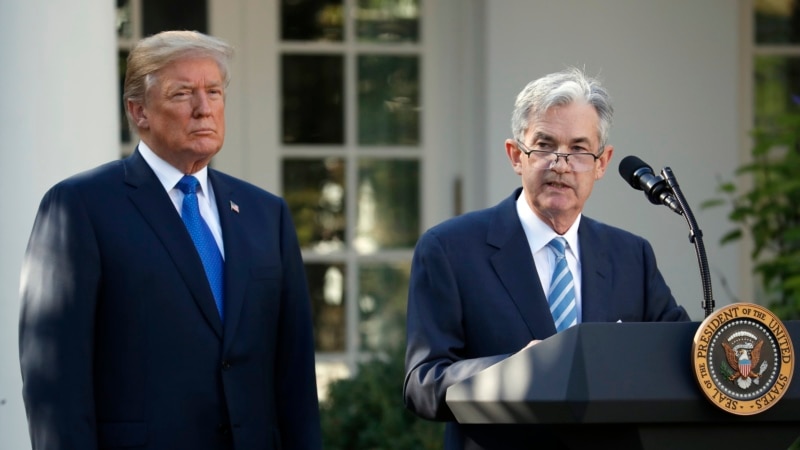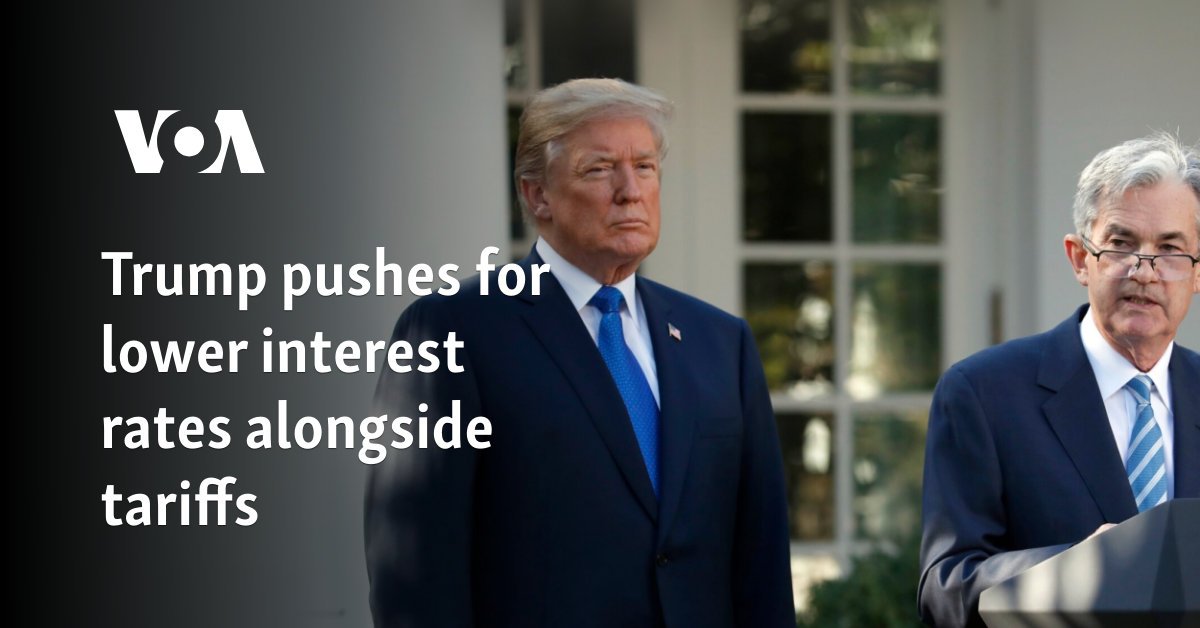
As his trade advisers finalized plans to enact reciprocal measures on every country that charges duties on U.S. imports, President Donald Trump announced Wednesday he will push for lower interest rates alongside his tariff policies.
“Interest Rates should be lowered, something which would go hand in hand with upcoming Tariffs!!! Lets Rock and Roll, America!!!” Trump said on social media Wednesday morning.
To maintain the Federal Reserves’ autonomy from politics, U.S. presidents traditionally avoid even the appearance of meddling in monetary policy and the nation’s interest rates, which is the purview of the central bank.
Trump, however, has not shied from the practice. In a videoconference address to the World Economic Forum in Davos, Switzerland, in January, Trump said he would “demand that interest rates drop immediately.”
“I know interest rates much better than they do,” he said of Fed officials. He has ramped up his criticism of Federal Reserve Chair Jerome Powell, whom he appointed in 2017 for a term that ends in 2026.
Trump’s push to lower interest rates is intended to go hand in hand with punitive measures on trading partners.
Reciprocal tariffs are “absolutely a high priority for the president,” White House economic adviser Kevin Hassett told reporters Wednesday, promising “a lot more action on it today.”
Hassett said the White House has begun negotiations with other countries early to lay the groundwork for imposing such tariffs, although he acknowledged the details about which sectors or how they will be implemented is a “work in progress.”
Under World Trade Organization rules, member countries have the right to impose tariffs on imports. Countries negotiate those rates at the WTO to determine the maximum tariff rate a member country can impose on imports from other member countries.
Inflation, looming trade war
U.S. inflation rose to 3% in January, according to government data released Wednesday. Last month, the annual pace was 2.9%.
Trump campaigned on lowering high consumer prices he blamed on his predecessor, Joe Biden. White House Press Secretary Karoline Leavitt again attributed the increase to the previous administration.
“This is an indictment on the Biden administration’s mismanagement of the inflation crisis and their lack of transparency,” she said during her briefing Wednesday.
Trump wants to lower interest rates and inflation, she said. “He believes that the whole of government economic approach that this administration is taking will result in lower inflation.”
However, some economists warn that combining high tariffs and low interest rates will have the opposite effect.
Trump’s plan reflects a “misunderstanding of how the economy works,” said Joseph Gagnon, senior fellow at the Peterson Institute for International Economics.
“Tariffs raise prices directly, that is inflationary, but also cutting interest rates is inflationary if you do it excessively,” he told VOA. “Especially with today’s data, cutting interest rates would not be a good idea.”
During testimony Tuesday before the Senate Banking Committee, Powell said the Fed was in no rush to cut interest rates because the economy had stabilized. He noted that inflation, while still above the Fed’s 2% target, was at 2.6% last year, and he said the labor market was cooling without plummeting, with the unemployment rate at 4%.
Gagnon also warned of a looming trade war. Trump already had announced Monday his decision to impose 25% tariffs on all steel and aluminum imports beginning March 12.
The duties will hit top U.S. steel supplier Canada, followed by Brazil, Mexico, South Korea and Germany. Additionally, Canada is the leader in aluminum exports to the American market.
European Union chief Ursula von der Leyen vowed on Tuesday the move “will not go unanswered,” saying it will trigger tough countermeasures from the 27-nation bloc, potentially targeting iconic American industries such as bourbon, jeans and motorcycles. EU trade ministers are meeting Wednesday to determine their next moves.
China, Mexico and Canada
Last week, Trump imposed an additional 10% tariff on Chinese goods, which the White House said was aimed at halting the flow of fentanyl opioids and their precursor chemicals.
On Monday China began slapping retaliatory actions on some American goods, including 15% duties on coal and natural gas imports and 10% on petroleum, agricultural equipment, high-emission vehicles and pickup trucks. The country also immediately implemented restrictions on the export of certain critical minerals, and it launched an antitrust investigation into American tech giant Google.
Trump delayed enacting a 25% tariff on goods from Mexico and Canada for a month — until March 4 — to allow negotiations over his demands for the U.S. neighbors to secure their borders and stop the flow of the illegal drug fentanyl.
The duties could affect about $1.323 trillion in trade imports that come from China, Mexico and Canada, according to U.S. government data. This accounts for 43% of U.S. imports and 5% of the $27 trillion U.S. gross domestic product.
If enacted, the new import taxes on Canada, Mexico and China will increase the average tariff rate from its current level of 3% to 10.7% based on contemporary trade patterns, said Joseph Brusuelas, chief economist at financial advisory firm RSM.
“Should the trade skirmishes escalate to include the European Union and turn into an all-out trade war, expect U.S. economic growth to ease back to 2% as the tariffs drag down growth and employment, stoke inflation and widen the current account deficit, all amid higher interest rates,” he wrote on RSM’s Real Economy Blog.
VOA’s Celia Mendoza contributed to this report.

